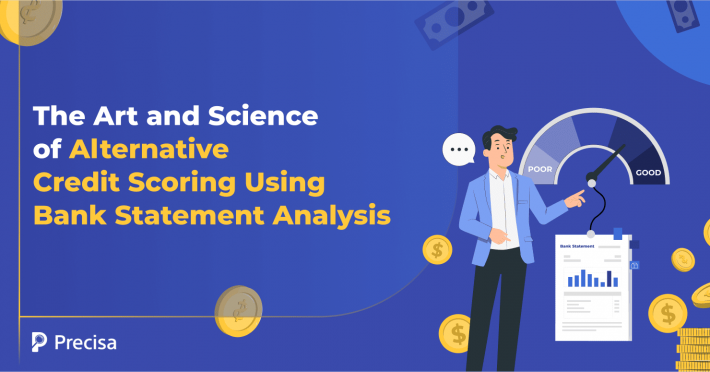Enhancing Efficiency in Bank Financial Statement Analysis: Troubleshooting Tips and Solutions

Bank financial statement analysis is critical for assessing the financial health of banks. However, manual analysis of complex financial statements requires significant time and effort to extract, organise, and interpret data accurately. On top of that, intricate financial instruments and diverse accounting standards further complicate the process.
To enhance efficiency, banks are adopting technology-driven solutions. These empower financial institutions to extract valuable insights from financial statements efficiently, enabling informed decision-making and confident evaluation of a bank’s financial well-being.
This article explores analysis hurdles, proposes solutions, and highlights the impact of AI and ML. Leveraging these technologies automates analysis, enhances efficiency, and optimises accuracy, streamlining operations and reducing manual effort in evaluating financial statements.
Challenges Involved in Troubleshooting Bank Financial Statements Analysis
Troubleshooting bank financial statement analysis can be a complex task, as it involves several challenges that financial analysts and institutions need to overcome. Here are some of the key challenges involved:
1. Data Quality
Ensuring accurate and reliable data is a primary challenge. Incomplete or inaccurate data can lead to incorrect conclusions and decisions.
2. Complex Accounting Standards
Dealing with intricate accounting standards like IFRS or GAAP can be challenging, especially with complex financial instruments or transactions.
3. Changing Regulations
The evolving regulatory environment poses challenges, requiring analysts to stay updated and adapt analysis processes to comply with new requirements.
4. Financial Statement Manipulation
Detecting fraudulent activities and manipulation of financial statements is difficult and requires advanced tools, expertise, and industry understanding.
5. Lack of Standardization
Inconsistencies in financial reporting arise due to the lack of standardisation across institutions, with different accounting methods and terminology being used.
Troubleshooting bank financial statement analysis necessitates robust data management, accounting expertise, and awareness of regulatory changes to overcome these challenges.
4 Troubleshooting Tips for Bank Financial Statement Analysis
Here are some expert tips that can help you navigate bank financial statement analysis:
1. Understand the Industry and Economic Environment
Before heading into the financial accounts, it is critical to understand the industry in which the firm operates as well as the wider economic situation. This understanding gives context and aids in the identification of industry-specific risks and trends that may have an impact on the company’s financial performance.
2. Analyse Key Financial Ratios
Financial ratios provide vital insights into a company’s financial performance and allow it to be compared to industry benchmarks. Liquidity ratios, profitability ratios, and leverage ratios, for example, might reflect a company’s ability to meet short-term obligations, produce profits, and manage debt.
For example, if a company’s liquidity ratio is below the industry average, this may indicate possible liquidity issues. The bank will investigate further and assess the company’s ability to repay its debts.
3. Scrutinise Cash Flow Statements
Cash flow statements detail a company’s cash inflows and outflows, showcasing its ability to generate cash through operations, investment, and borrowing. Analysing the cash flow statement aids in assessing the company’s cash flow condition, ability to fund operations and earnings quality.
For example, If a software company’s cash flow statement shows negative cash flows despite reporting positive net income, it may indicate aggressive revenue recognition practises or inadequate working capital management, raising liquidity concerns for the company.
4. Evaluate Financial Statement Footnotes
Financial statement footnotes give additional information and disclosures that may affect how the financial statements are interpreted. These footnotes frequently include important information concerning contingent liabilities, related-party transactions, and accounting standards. Ignoring footnotes can result in insufficient analysis and the potential overlooking of serious dangers.
For example, a bank reviewing a construction company’s financial accounts should carefully analyse the footnotes to discover any current legal challenges or guarantees that may damage the company’s financial status. This data is critical for accurate risk assessment.
How Can an Automated Bank Financial Statement Analysis Tool Help in Efficient Analysis?

An automated bank financial statement analysis tool can improve the efficiency and accuracy of analysing bank financial statements greatly. Here are some examples of how such a tool can help with the analytical process:
1. Data Extraction and Integration
An automated tool can extract financial data from various sources, such as financial statements, databases, or APIs, and integrate it into a single platform. This eliminates the need for manual data entry and reduces the chances of errors and inconsistencies.
2. Standardised Reporting
An automated tool can generate standardised reports based on determined ratios and metrics. These reports may include graphical representations, trend analysis, benchmarking against industry peers, and other pertinent information. Standardised reports make it easier to analyse financial data and make better decisions.
3. Real-time Updates
Automated tools can be linked to real-time data sources to ensure that financial information is always up to date. This is especially beneficial in situations requiring regular analysis, such as quarterly or annual reporting periods. Real-time updates give analysts the most up-to-date information, allowing them to make fast decisions.
4. Integration with Other Systems
Automated analysis tools can be integrated with other financial systems, such as risk management platforms or accounting software. This interface enables easy data transfer and assures consistency across operations. It also allows analysts to access new data and insights from these integrated systems, resulting in a more thorough analysis.
5. Anomaly Detection
Anomalies or errors in financial data can be detected using automated methods. The programme may detect possible concerns, such as unexpected trends, outliers, or disparities by using predefined algorithms or machine learning approaches. This assists analysts in identifying areas that require additional research or inspection.
6. Machine Learning and Artificial Intelligence
Powered by machine learning and artificial intelligence, These tools can automate data extraction, detect anomalies, and provide predicted insights based on historical patterns.
7. Cloud-Based Appraoch
Bank financial statement analysis tools offer cloud-based data storage, collaboration, and analysis technologies. It enables real-time access to financial data while also assuring consistency and a collaborative environment, allowing multiple analysts to work on the analysis process at the same time.
8. Data Visualisation
To improve comprehension and assist speedy decision-making, bank statement analyser tools present financial facts using charts, graphs, and visual aids. Visualisation tools make it easier to recognise trends and patterns, allowing analysts to spot abnormalities or outliers.
Final Thoughts
The efficiency of bank financial statement analysis is critical for making informed decisions. Data quality assurance, emphasis on key performance metrics, and comparative and time trend studies all help to improve accuracy and efficiency. Automation, data visualisation, cloud-based platforms, and machine learning make analysis more efficient.
Precisa, an automated Bank Statement Analyser, uses artificial intelligence and machine learning to simplify and accelerate financial bank statement processing. It provides valuable insights, improves efficiency, and reduces default risk by analysing uploaded bank statements.
Precisa detects bank statement errors quickly and effectively using AI-powered analytics, providing important insights. It also has a user-friendly dashboard that helps organisations evaluate financing possibilities, and real-time data enable businesses to make educated decisions while reducing the risk of errors.
Sign up if you would like to learn more about Precisa!



